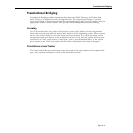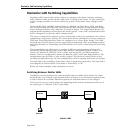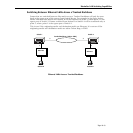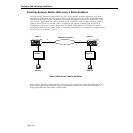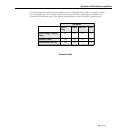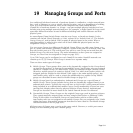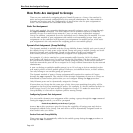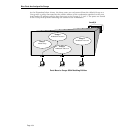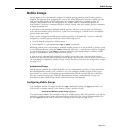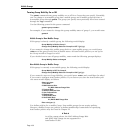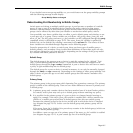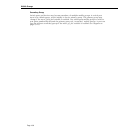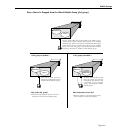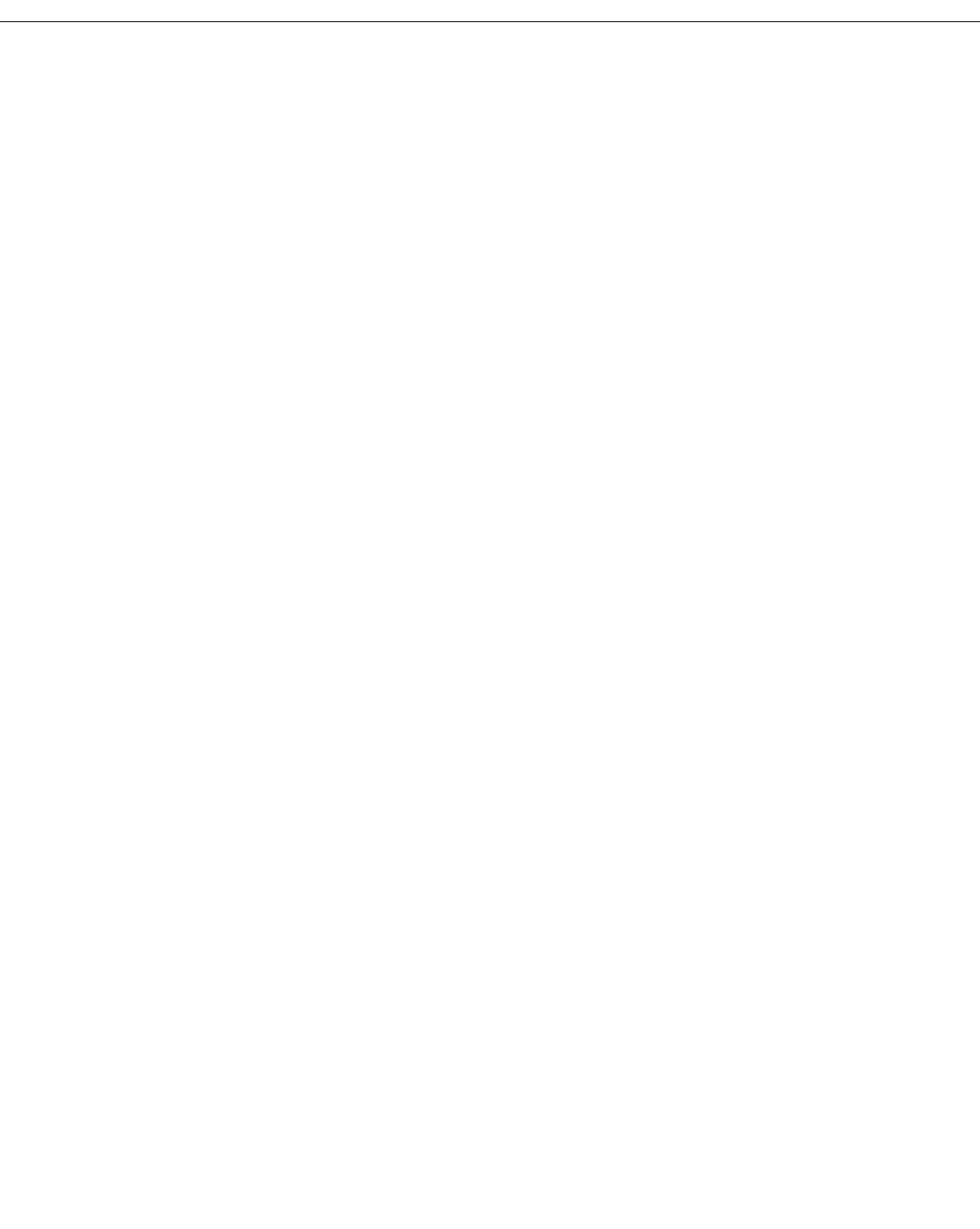
How Ports Are Assigned to Groups
Page 19-2
How Ports Are Assigned to Groups
There are two methods for assigning physical OmniS/R ports to a Group. One method is
static and requires manual configuration by the network administrator; the other method is
dynamic and requires only the configuration of AutoTracker rules for port assignment to
occur. The two methods are described in this section.
Static Port Assignment
In the static method, the network administrator manually assigns a port to a Group through
the crgp and addvp commands. The static method can be restrictive because it limits the
mobility of users in a multi-Group network. Users can only move within their assigned
Group. In addition, customized access for individual users is limited by this method. You can
use the static method of port assignment with mobile and non-mobile groups. Static port
assignment can be combined with dynamic port assignment for mobile groups, while static
port assignment is the only method for assigning ports to non-mobile groups.
Dynamic Port Assignment (Group Mobility)
The dynamic method is available with the Group Mobility feature. Initially each port is part of
the default Group #1 (only ports in the default Group and ports in mobile Groups are candi-
dates for dynamic port assignment). Based on the nature of traffic and configured
AutoTracker policies, ports are dynamically assigned to the appropriate Group.
For example, if a device attached to a port transmits traffic from the 140.0.0.0 subnet,
AutoTracker will check to see if a policy exists for this IP address. If it does, then it will move
the port from the default Group to the first Group using this policy. If this device detaches
from the network the port will be re-assigned to a Group without intervention by the network
administrator.
A port can belong to multiple mobile groups (up to 16) as long as devices attached to that
port match policies of these mobile groups. However, an individual device, or MAC address,
can only belong to one mobile group per protocol.
The dynamic method of port-to-Group assignment still requires the creation of Groups
through the
crgp command. The criteria for the dynamic assignment of ports to a Group are
determined by AutoTracker policies that you can configure during the crgp procedure.
Only Ethernet ports can be dynamically assigned to Groups.
If more than one Group has the same type of rule, then ports matching that policy will be
assigned to the first Group matching the policy. For example, if a device matched policies in
both Groups 2 and 5, the port would be assigned to Group 2. To make the most out of
Group Mobility it is best not to duplicate policies among Groups.
Configuring Dynamic Port Assignment
You can enable dynamic port assignment while creating a group through the
crgp command.
During the crgp procedure, you will be prompted
Enable Group Mobility on the Group ? [y/n] (n):
Answer Yes to this question to give this Group the capability of having ports and devices
dynamically added to the Group. Port and devices will be dynamically assigned based on
AutoTracker rules you define.
Service Ports and Group Mobility
These ports may be automatically added to the mobile group during the
crgp procedure or
through the cats command.




